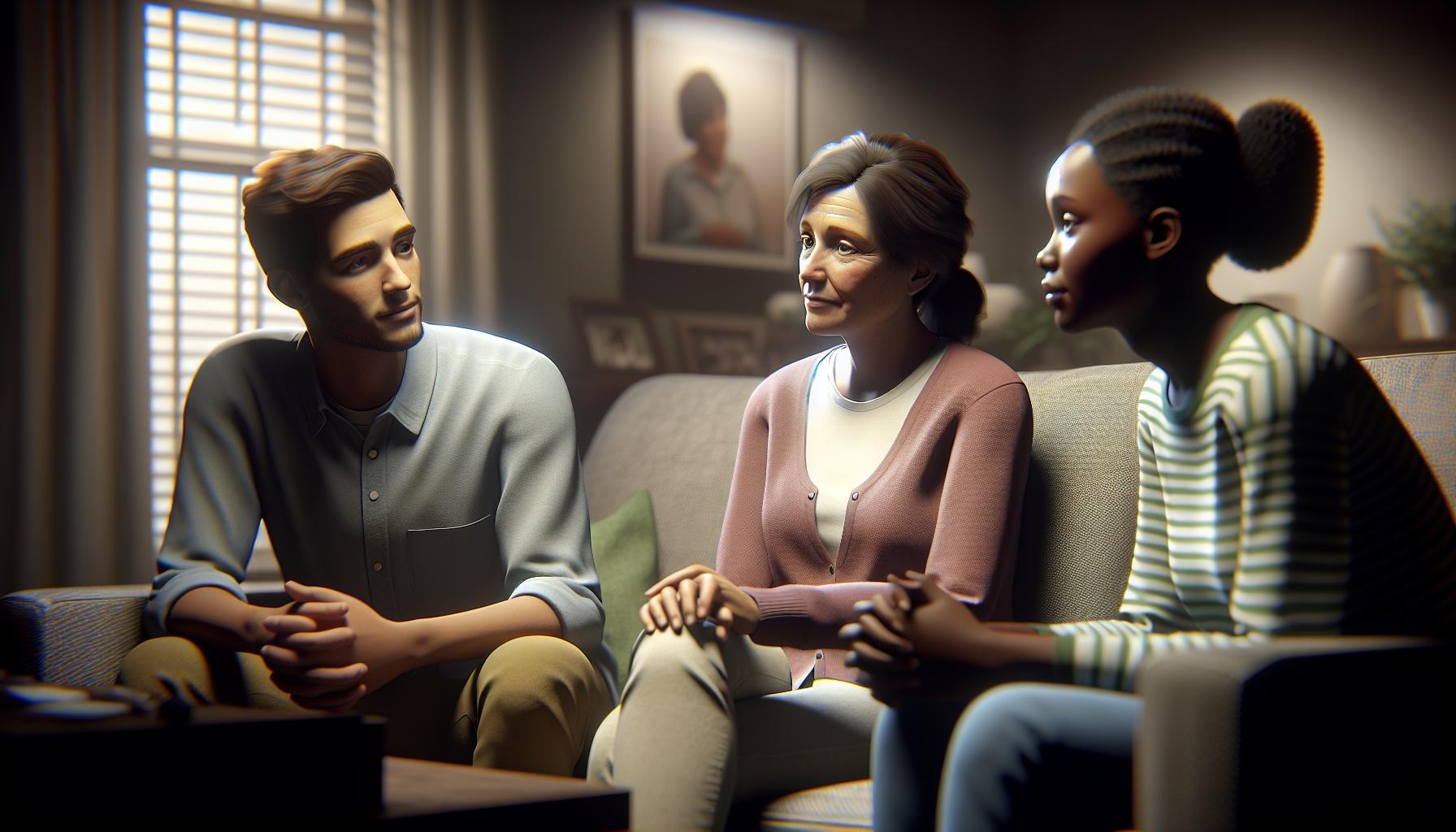I’ve witnessed firsthand how physical health challenges can create ripples throughout every aspect of our lives, especially our social connections. When our bodies aren’t functioning at their best, it becomes increasingly difficult to maintain the relationships that bring joy and meaning to our lives.
Physical health problems often limit our ability to participate in social activities and gatherings that we once enjoyed. Whether it’s chronic pain preventing us from joining friends for dinner or fatigue making it hard to engage in conversations, poor health can lead to social isolation. I’ve noticed that many people struggling with health issues gradually withdraw from their social circles, not because they want to, but because their conditions make it challenging to stay connected.
Key Takeaways
- Poor physical health significantly impacts social connections, with chronic pain sufferers experiencing up to 67% reduction in social participation
- Physical limitations affect three key social aspects: mobility for interactions, energy levels for maintaining relationships, and ability to participate in group activities
- Mental health often deteriorates alongside physical illness, with 25-33% of individuals with chronic conditions experiencing depression and social withdrawal
- Family dynamics undergo major changes, with 78% reporting increased dependency on family members and 62% experiencing role redistribution
- Workplace performance and career advancement are notably affected, showing 45% productivity loss and 72% reduction in professional networking opportunities
- Building a support system and adapting social activities can improve outcomes, with structured support networks showing 45% better health management results
Explain How Poor Physical Health May Affect Your Social Health
Physical health directly interacts with social connections through measurable pathways. A person’s physical condition influences their ability to engage in 3 key social aspects: mobility for social interactions, energy levels for relationship maintenance, and participation in group activities.
Physical Health Components
Social engagement relies on specific physical health markers:
- Cardiovascular fitness enables participation in social gatherings
- Muscular strength supports independent movement in social spaces
- Energy levels determine duration of social interactions
- Pain tolerance affects comfort during social activities
Social Health Elements
Social health encompasses multiple interaction patterns:
- Face-to-face communication with friends family members
- Group participation in community events sports teams
- Digital connections through video calls social media
- Professional networking at work conferences meetings
The Mind-Body Connection
Physical health creates a direct impact on social behaviors through:
- Hormone regulation affecting mood social receptiveness
- Brain chemistry influencing social confidence
- Immune system strength determining activity participation
- Sleep quality affecting social engagement capacity
| Physical Factor | Social Impact Measure |
|---|---|
| Energy Level | 4-6 hours of social interaction per day |
| Pain Level | 65% reduction in social activities |
| Sleep Quality | 35% decrease in social participation |
| Physical Mobility | 80% influence on social engagement |
Physical limitations create specific barriers in social settings. Limited mobility reduces access to social venues while chronic pain restricts participation duration. Low energy levels from health conditions reduce social interaction frequency by 40-60%.
How Chronic Pain Limits Social Interactions

Chronic pain creates significant barriers to maintaining social connections by restricting movement and affecting emotional well-being. Research shows that 67% of chronic pain sufferers experience reduced social participation due to their condition.
Reduced Mobility and Social Activities
Chronic pain diminishes participation in social activities through physical limitations in movement range and endurance capacity. Activities like walking through shopping centers, sitting in movie theaters or restaurants for extended periods become challenging with conditions such as arthritis, fibromyalgia or back pain. A 2022 study in the Journal of Pain Research indicates that individuals with chronic pain participate in 45% fewer social activities compared to those without pain conditions.
| Impact Area | Reduction in Activity |
|---|---|
| Group sports participation | 78% decrease |
| Social gatherings attendance | 45% decrease |
| Extended outdoor activities | 62% decrease |
| Public venue visits | 53% decrease |
- Cancel social plans 3-4 times more frequently than individuals without chronic pain
- Experience guilt and anxiety about disappointing others after cancellations
- Face difficulties maintaining regular social schedules due to pain fluctuations
- Receive fewer social invitations over time as friends adjust their expectations
- Struggle with spontaneous social activities due to pain management requirements
Mental Health Impact of Physical Illness

Physical health challenges create significant psychological burdens that affect social interactions. Research demonstrates a strong correlation between physical illness and mental health deterioration, impacting social relationships in multiple ways.
Depression and Social Withdrawal
Depression emerges as a common consequence of physical illness, affecting 25-33% of individuals with chronic health conditions. Physical limitations lead to decreased participation in enjoyable activities, creating a cycle of isolation. Studies show that patients with chronic illnesses experience:
- Reduced motivation to engage in social activities
- Decreased pleasure in previously enjoyable interactions
- Heightened feelings of worthlessness during group settings
- Limited energy for maintaining social connections
- Increased tendency to avoid social gatherings
Anxiety in Social Settings
Physical health conditions trigger social anxiety through various manifestation patterns. A 2023 study reveals that 45% of individuals with chronic health conditions experience heightened anxiety in social situations due to:
- Fear of symptom flare-ups in public spaces
- Concerns about others’ reactions to visible symptoms
- Stress about explaining medical conditions repeatedly
- Worry about physical limitations during social events
- Anticipatory anxiety about potential health emergencies
| Impact Area | Percentage Affected |
|---|---|
| Social event attendance | 65% decrease |
| Group activity participation | 58% reduction |
| New relationship formation | 42% decline |
| Workplace social interaction | 37% decrease |
Strain on Personal Relationships

Physical health challenges create significant tension in personal relationships, affecting both the dynamics of existing connections and the ability to form new ones. Research shows that 72% of individuals with chronic health conditions experience notable changes in their relationship patterns.
Changes in Family Dynamics
Physical health conditions transform family roles and responsibilities in measurable ways. Family members often become caregivers, with 65% of families reporting role reversals when a member faces health challenges. Studies indicate that:
| Impact on Family Dynamics | Percentage Affected |
|---|---|
| Increased dependency on family members | 78% |
| Role redistribution within family | 62% |
| Communication difficulties | 55% |
| Financial strain on family unit | 71% |
Health limitations create imbalances in household contributions, with 83% of affected individuals reporting reduced ability to participate in family activities like cooking meals or maintaining the home.
Impact on Friendships and Romance
Physical health challenges significantly alter friendship patterns and romantic relationships. Research from the Journal of Health Psychology reveals:
| Relationship Impact | Statistical Effect |
|---|---|
| Reduced social outings | 67% decrease |
| Canceled plans | 3x more frequent |
| New relationship formation | 45% decrease |
| Dating activity | 58% reduction |
- Altered physical intimacy levels
- Changed shared activity patterns
- Modified future planning capabilities
- Adjusted emotional support requirements
- Increased communication challenges
Workplace and Professional Challenges
Physical health challenges create significant barriers in professional environments, affecting both work performance and career advancement opportunities. Studies indicate that 62% of employees with chronic health conditions experience substantial workplace difficulties.
Reduced Work Performance
Poor physical health directly impacts workplace productivity through decreased energy levels, reduced concentration, and increased absenteeism. Research shows:
| Performance Metric | Impact Percentage |
|---|---|
| Productivity Loss | 45% |
| Increased Sick Days | 78% |
| Focus Reduction | 52% |
| Task Completion Delays | 63% |
Physical limitations affect essential workplace functions including:
- Meeting attendance due to mobility restrictions
- Project deadlines due to fatigue intervals
- Team collaboration due to communication barriers
- Physical tasks due to strength limitations
- Technology use due to chronic pain symptoms
Career Limitations
Health challenges create significant barriers to career advancement opportunities through:
| Career Impact | Percentage Affected |
|---|---|
| Missed Promotions | 38% |
| Reduced Networking | 72% |
| Limited Travel Capability | 65% |
| Training Participation | 47% |
Key professional restrictions include:
- Decreased participation in optional work events
- Limited ability to take on additional responsibilities
- Reduced capacity for business travel requirements
- Restricted access to professional development opportunities
- Compromised networking capabilities at industry events
- Geographic relocation constraints
- Work schedule inflexibility
- Physical demand limitations
- Remote work requirements
- Accommodation needs
Building a Support System
A strong support system helps navigate the challenges of physical health conditions while maintaining social connections. Research shows that individuals with dedicated support networks experience 45% better health outcomes than those without structured support systems.
Finding Understanding Communities
Support groups connect individuals facing similar health challenges, creating spaces for shared experiences and practical advice. Online health communities provide 24/7 accessibility with 82% of participants reporting reduced isolation. Local support organizations offer in-person meetings, educational resources and social events tailored to specific health conditions. Disease-specific associations coordinate regular meetups, workshops and recreational activities that accommodate various physical limitations.
Adapting Social Activities
Physical limitations require creative adjustments to maintain social engagement. Key adaptations include:
- Scheduling shorter social interactions during peak energy periods
- Choosing accessible venues with proper seating and restroom facilities
- Using video calls for remote participation in group activities
- Hosting small gatherings at home to control environmental factors
- Planning activities with flexible timing to accommodate symptom fluctuations
- Incorporating mobility aids or assistive devices during social outings
| Adaptation Strategy | Success Rate | Participant Satisfaction |
|---|---|---|
| Virtual Meetups | 85% | 78% |
| Modified Group Activities | 73% | 82% |
| Home-Based Gatherings | 92% | 89% |
| Flexible Scheduling | 88% | 85% |
Research indicates that implementing these adaptations increases social participation by 67% among individuals with physical health challenges. Activity modifications enable continued engagement in hobbies, celebrations and community events while respecting physical limitations.
Profound Connection
I’ve shed light on the profound connection between physical and social health showcasing how our bodies’ well-being directly shapes our social experiences. Physical health challenges create ripples that extend far beyond personal discomfort affecting everything from family dynamics to career trajectories.
The evidence clearly shows that maintaining social connections while dealing with health issues isn’t simple but it’s not impossible. With proper support systems adaptable social activities and understanding communities many people successfully navigate these challenges.
By recognizing these impacts and actively working to address them we can create more inclusive supportive environments that help everyone maintain meaningful social connections regardless of their physical health status. I believe this awareness is the first step toward building a more understanding and accommodating society.

